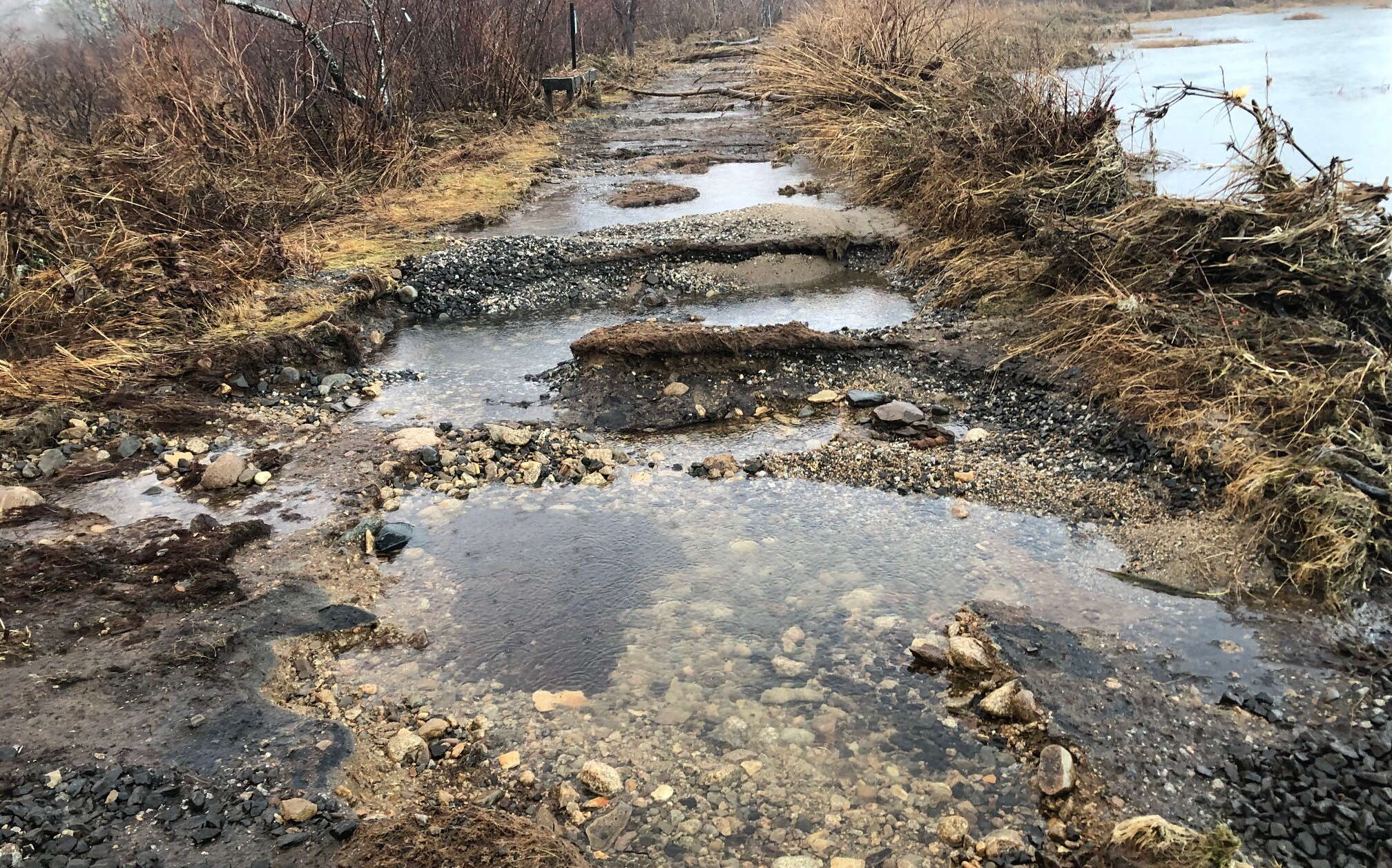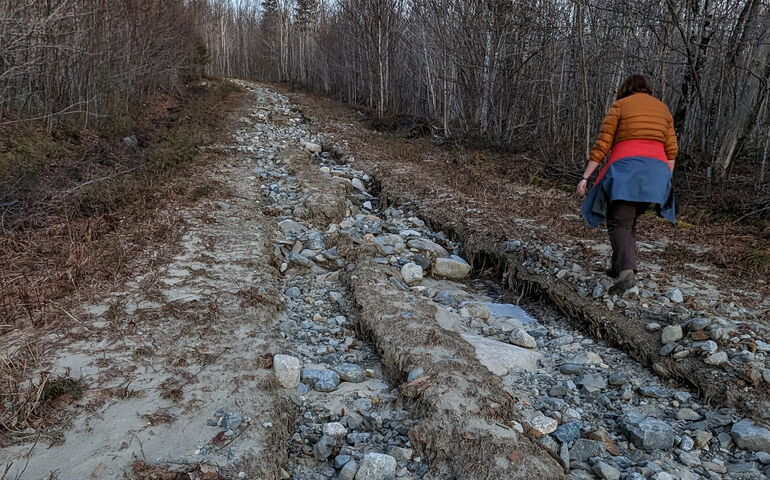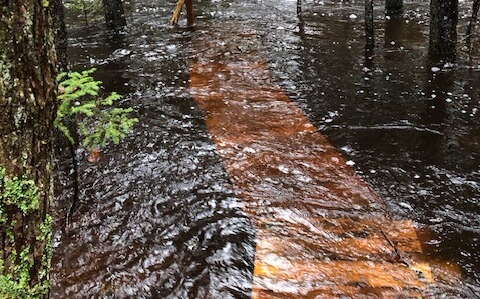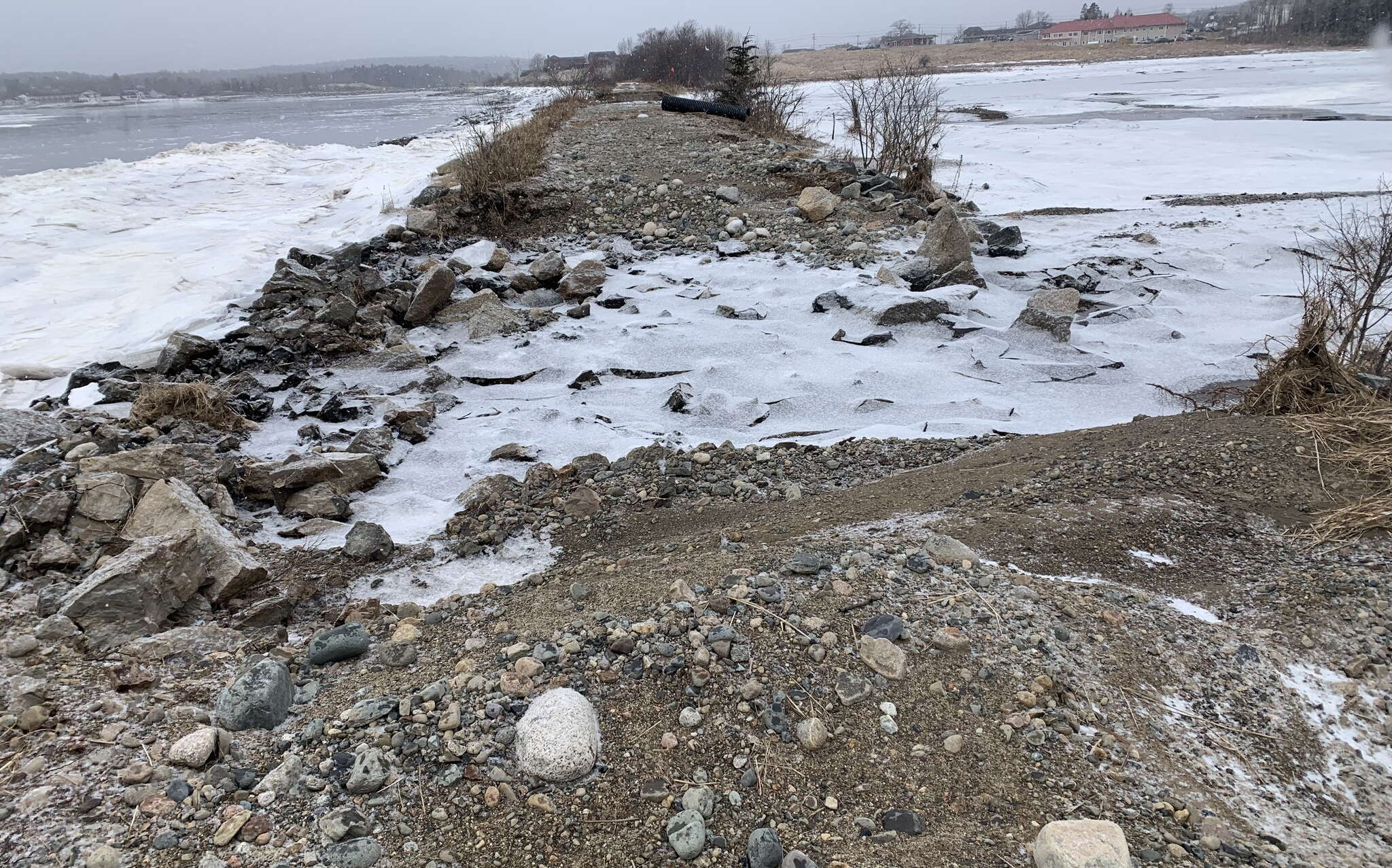
With $5.2M in recent storm damage, Maine's trail system is looking to become more resilient
 Courtesy / Seth Page
Road access was washed out to a section of trail, called the Carrying Place, managed by Maine Huts and Trails.
Courtesy / Seth Page
Road access was washed out to a section of trail, called the Carrying Place, managed by Maine Huts and Trails.
Portions of Maine’s trail system, considered an essential component of Maine's $3 billion outdoor recreation economy, have suffered $5.2 million in damage as a result of frequent rain and extreme storms since December.
Statewide, trails and trail infrastructure sustained severe to moderate damage, according to survey results released this week by the Maine Trails Coalition.
Damage reported widely included major washouts, erosion, shifted or missing structures and tree blowdowns. Damage to trailheads and access roads was reported by 32% of respondents.

Preliminary estimates to repair trails and trail infrastructure total over $5.2 million, but the number will likely rise, according to a news release.
Respondents to the survey included municipalities, community groups, nonprofits, land trusts, snowmobile clubs, mountain bike clubs and public land managers.
Approximately 38% of the damage was reported as moderate to severe and 58% as minor to moderate. Several reports indicated they won’t know the true level of damage until spring assessments are complete.
Trail managers have already been addressing the need for storm mitigation.
“In the past, we had spent $12,500 repairing after a major storm,” said Ryan Gates, stewardship program director for the Coastal Mountains Land Trust in Camden. “We have transitioned to a higher level of trail building and maintenance.
"We now are trying to use more sustainable practices or materials that usually have more cost upfront, but the savings is in the longer lasting materials that require less maintenance over time.”

Trail maintenance generally depend on volunteers, said Alan Audet, a trail steward for the town of Poland. However, “It's going to be a tough to clear the really large trees that came down in recent storms with the people we have.”
In Carrabassett Valley, the economic impact of damaged trails has been front and center this year, according to the report.
“Our economy is based on recreational tourism,” said Josh Tauses, trail master for the Freeman Ridge Bike Park. “Impacts to our networks resulting in damaged and closed corridors degrade the user experience, possibly leading to fewer user visits in 2024.”

He continued, “Significant costs related to infrastructure repairs impede the progress of new corridors and may be challenging to execute all at once. Although our town has been able to quickly address repairs, our nonprofit community partners may be less able to do so.”
The group initially reported $100,000 to $200,000 in damage, but the amount is likely to be more, he added.
The state’s multi-use trails that are part of the East Coast Greenway have also taken a hit. The Downeast Sunrise Trail, an 87-mile off-road, multi-use trail in Hancock and Washington counties, reported an estimated $530,000-plus amount of damage associated with major washouts between Machias and East Machias. That damage is on top of existing surface maintenance concerns.
The Eastern Trail, in York and Cumberland counties, has seen two breaches of the trail at its most trafficked section, Scarborough Marsh, most recently on March 10. The Eastern Trail brings over $1 million in tax revenue to the state, and is used by locals and visitors for recreation and alternative transportation.
“Often we think of these things as a once in a decade occurrence, but big storms are becoming commonplace and we’re seeing this breach happen more and more frequently,” said Patrick Conlon, the trail’s manager. “It’s wreaking havoc on trail conditions and people are concerned. We can't just keep putting band-aids on this.”
The report calls for planning and investment to make trails more resilient. Questions to be considered include, whether to build back trails, reroute them or close them entirely.
The coalition said it plans to release a follow-up survey to help decision-makers statewide understand impacts and opportunities.
Last year, the state legislature considered a $30 million Maine Trails Bond bill (LD 1156)to support trail design, maintenance and construction.
The bill was carried over.
Snowmobiling alone generates more than $600 million for the state's economy each year.
Maine Trails Coalition was formed in 2019 as a statewide voice for trail users, supporters and advocates. Its mission is to champion the establishment, use and stewardship of trails in Maine.










0 Comments